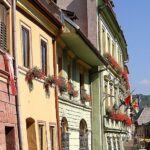Constanta

As Romania’s largest port and coastal city, Constanta offers a unique blend of history and natural beauty. Located on the Black Sea coast, Constanta has a multicultural character influenced by Roman, Turkish, and Greek civilizations.
Explore the Old Town, visit the Roman ruins, and soak up the sun on the beautiful beaches. Constanta also offers a vibrant nightlife scene, with many nightclubs and music festivals taking place during the summer season.










